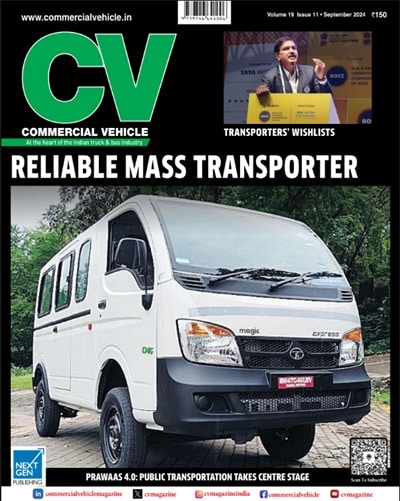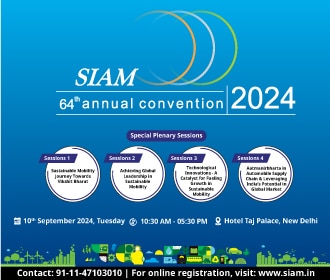In an industry talk session, Vijay Vashist, Associate Vice President – BDM at Safexpress Pvt. Ltd. spoke to Ashish Bhatia on the logistics industry preparing for the road ahead despite no signs of freight costs and inflation easing for the sector.

Q. What is the significance of the 62nd SIAM Annual session and the industry gathering under one roof?
A. For us in the logistics sector, physicality matters a lot especially when industry issues are taken up so actively. The pandemic marred fiscal had their share of challenges and we rose to support the customers to the best of our ability. If you look at both the automotive and components manufacturing industry, we as logistics players are the backbone of this supply chain. We have partnered ACMA, for instance, for nearly a decade now. We have reached out to this large pool of which many are manufacturers and always supported them be it thick or thin.
Q. What is your assessment of the industry sentiment with the uptick after the pandemic-induced slump?
A. The pandemic brought along learnings with it and the industry is performing better than we initially anticipated.
Q. Having pioneered the out sourced logistics model, how has the logistics sector evolved in your opinion?
A. From our experience, we have out sourced first-mile, mid-mile and last-mile logistics. We have a very asset lean model from that perspective. With nearly 10,000 people working for us of which only 2,000 are on rolls. Outsourcing is inherent in our DNA. While we don’t own a single truck in our fleet, on the warehouse front, with growth projected, yes you need warehouses for Third-Party Logistics (3PL) and then you need it for the transshipments. In that space, everyone is opening their facility. In the near term, we are going to inaugurate up to four warehouses pan India. So business is booming.
Q. How has business been impacted by government initiatives like the Gati Shakti programme and the evolving hub and spoke model?
A. After the Goods and Services Tax (GST) roll out, a lot of transparency seeped into the business. With the industry valued at rupees eight to nine lakh crore, the organised players account for Rs.10,000 to Rs.12,000 crore worth of business. This means, there is an immense opportunity waiting to be tapped when it comes to evolving businesses that have an even greater degree of transparency built into them.
Q. Your take on logistics costs of shipping components witnessing a drastic reduction of 50 per cent? Is the logistics inflation equation as whole impacting operating margins of this segment?
A. I beg to differ there. It also depends on the point-to-point consideration when calculating these costs. If you break it down to on-road logistics, and third-party logistics, it’s a small component of the supply chain. If you look at the raw material reaching the end-consumer, this would start from the point where the finished goods land at the warehouse for further distribution. There, is no cost reduction in my opinion barring the benefits that can be accumulated from scaling up operations for economies of scale to kick into operations. The impact of inflation was particularly challenging during the pandemic. Despite the pressures, we did not let go of our employees. In a people-centric industry like ours, we don’t see inflation easing drastically. Fuel, cost of human resources, on-road costs and cost of trucks for that matter are all on an upward trajectory.
Q. What is your assessment of freight costs in the domestic market?
A. Domestic freight costs are not hinting at a downward trend. The costs had shot up during the pandemic and freight costs internationally would have eased up. It is yet to have a ripple effect on the domestic market.
Q. What is your assessment of the growth and efficiency of rail versus road freight transportation?
A. We are yet to experience the efficiencies of rail transportation as a company while we are trying to understand that model of transportation deeply. So far we haven’t come across an option where the integration is a multi- modal barrier and I feel the transparency, agility, and speed of transport are among the factors that are not native to rail transportation. For us, road transportation continues to be a major focus segment with a per centage of air freight handling included.
Q. What are the growth and challenge areas for Safexpress and the logistics industry as a whole?
A. For growth opportunities, the sky is the limit. It rests on the fact as our Chairman puts it, you can get as much business as you can handle. Trained manpower is among the biggest challenges the industry faces today. Upskilling is a key focus area. Then there are challenges relating to topography, the transition of rules therein, and the fluctuation of regional demand that often leads to our trucks having to return on long routes, unladen. The ideal scenario would be for states to consume and produce proportionately.




























